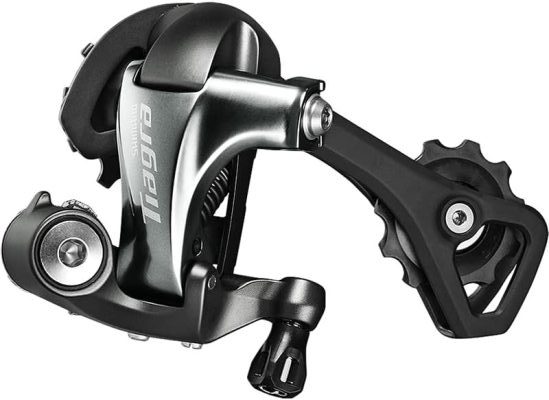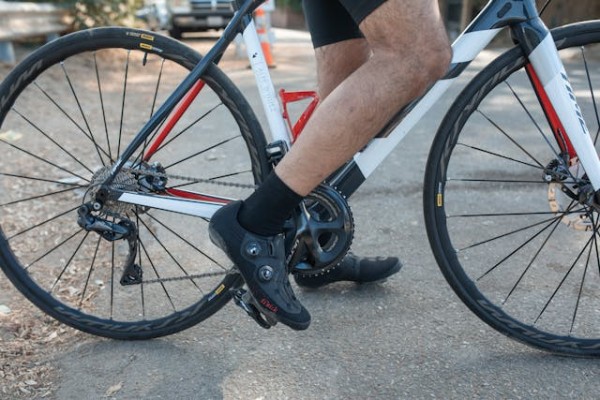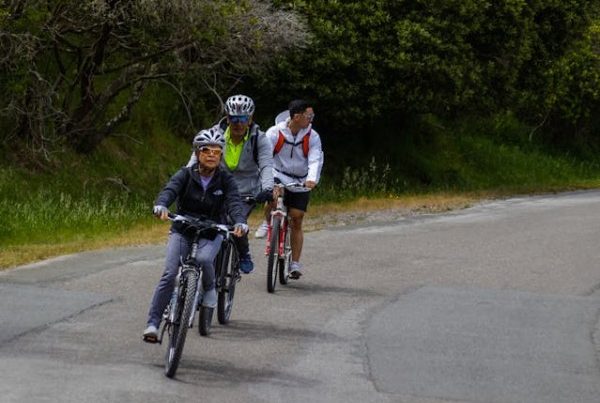Have you ever experienced the frustration of riding a bike that just doesn’t feel quite right? A pro bike fit can be the answer to all your cycling woes, ensuring comfort, efficiency, and optimal performance on the road. But how do you make the most of this professional service? Well, buckle up and get ready to discover the secrets to unlocking the full potential of your bike fit experience.
From preparing beforehand to taking your bike fit to the next level, we will guide you through the essential steps that will leave you pedaling with confidence and joy. So, let’s dive in and uncover the keys to achieving the perfect bike fit!
5. Preparing for Your Bike Fit

Before your bike fit appointment, it’s important to prepare yourself physically and mentally for the session to maximize its effectiveness.
Physically, make sure you come to the appointment well-rested and with a clear mind. Avoid intense workouts or long rides the day before, as fatigue can affect your body’s positioning on the bike. Additionally, wear your usual cycling attire, including your cycling shoes and any accessories you use regularly, such as a heart rate monitor or cycling computer.
Mentally, come with an open mind and a willingness to try new adjustments. Be prepared to communicate your goals and any discomfort or issues you have been experiencing while riding.
4. Maximizing Your Bike Fit Session
To make the most of your bike fit session, ensure that you arrive prepared physically and mentally, ready to optimize your comfort and performance on the bike.
Start by wearing your usual cycling attire, including your cycling shoes, shorts, and jersey. Bring any additional equipment or accessories you regularly use while riding, such as your helmet, gloves, and sunglasses. It’s important to replicate your typical riding setup as closely as possible to get an accurate fit.
Additionally, come with a clear understanding of your cycling goals and any specific issues or discomfort you may be experiencing. Communicate openly with the bike fitter, providing them with relevant information about your riding style, experience level, and any previous injuries. Remember, the more information you provide, the better they can tailor the fit to your needs.
3. Implementing Bike Fit Recommendations
You can effectively implement the bike fit recommendations by making adjustments to your bike setup based on the fitter’s expertise. Start by adjusting the saddle height. A proper saddle height is crucial for optimizing power transfer and preventing injuries. Follow the fitter’s recommendation for the ideal height, which is usually determined by measuring the angle of your knee when the pedal is at its lowest point.
Next, make adjustments to the saddle position. This involves moving the saddle forward or backward to align your knee with the pedal spindle. The fitter may also recommend changing the stem length or handlebar height to improve your riding position and reduce strain on your back and neck. It’s important to carefully follow the fitter’s instructions to ensure a comfortable and efficient riding experience.
2. Monitoring and Adjusting Your Bike Fit
To ensure optimal performance and comfort, it’s essential to regularly monitor and make necessary adjustments to your bike fit. Once you have undergone a professional bike fit, it’s important to understand that your body and riding style may change over time. Regular monitoring of your bike fit will allow you to identify any discomfort or potential issues that may arise.
Pay attention to your body’s feedback during and after rides, and take note of any areas of discomfort or pain. If you experience discomfort, it may indicate the need for adjustments to your bike fit. Common areas that may require adjustment include saddle height, saddle position, handlebar reach, and cleat alignment.
Consulting with a professional bike fitter can help you make the necessary adjustments to maintain a comfortable and efficient riding position. Remember, a properly fitted bike will enhance your performance and minimize the risk of injury.
1. Taking Your Bike Fit to the Next Level
Once you have ensured that your bike fit is comfortable and optimized for your body and riding style, it’s time to take it to the next level by fine-tuning the details for even greater performance and efficiency. To achieve this, focus on three key areas: saddle height, cleat position, and handlebar reach.
First, make sure your saddle height is set correctly. A professional bike fit specialist can help you determine the optimal saddle height based on factors such as leg length and knee extension. Next, consider your cleat position. Proper alignment can improve power transfer and reduce the risk of injury.
Lastly, evaluate your handlebar reach. Experiment with different stem lengths and handlebar positions to find the most comfortable and aerodynamic position for your riding style. Fine-tuning these details will help you maximize your performance and efficiency on the bike.
Frequently Asked Questions
Can I Bring My Bike to a Professional Bike Fit Session?
Yes, you can bring your bike to a professional bike fit session. Bringing your bike allows the fitter to accurately assess and optimize your position on the bike. They can make precise adjustments to the seat height, handlebar position, and cleat placement to ensure a comfortable and efficient riding experience.
How Long Does a Bike Fit Session Typically Last?
A bike fit session typically lasts around 1-2 hours. During this time, a professional will assess your body measurements, flexibility, and riding style to make adjustments to your bike. They may analyze your pedal stroke, saddle height, handlebar position, and more. By the end of the session, you can expect to have a bike that’s tailored specifically to your individual needs, maximizing your comfort, performance, and injury prevention.
Is It Necessary to Wear Cycling-Specific Clothing During a Bike Fit Session?
Cycling-specific clothing is designed to provide comfort, flexibility, and breathability, which can greatly enhance the accuracy and effectiveness of the bike fit process. These specialized garments allow the fitter to observe your body’s movements and alignment more accurately, ensuring precise adjustments to optimize your riding position.
Additionally, cycling clothing helps to eliminate any potential discomfort or restrictions caused by regular clothing, allowing you to fully focus on the bike fit session.
Are There Any Specific Exercises or Stretches I Should Do Before a Bike Fit Session?
Before a bike fit session, it’s important to prepare your body to ensure accurate measurements and optimal results. Start with some light exercises and stretches to warm up your muscles and increase flexibility. Focus on areas like your hips, hamstrings, and lower back, as these are commonly affected by cycling. Incorporating exercises that improve core strength and stability can also be beneficial.
Can a Professional Bike Fit Help Alleviate Discomfort in My Neck and Shoulders While Cycling?
A professional bike fit can indeed help alleviate discomfort in your neck and shoulders while cycling. By analyzing your body’s positioning on the bike and making necessary adjustments, a pro bike fit can optimize your riding posture and reduce strain on your upper body.
They may suggest modifications to your bike setup, such as adjusting handlebar height and reach, to ensure proper alignment and support. This personalized approach can greatly improve your comfort and enjoyment while riding.
Conclusion
You’ve done it! You’ve unlocked the secrets to optimizing your bike fit. By preparing for your session, maximizing your time with the expert, implementing their recommendations, and monitoring your fit, you’ve taken a giant leap towards peak performance.
But don’t stop there! Take your bike fit to the next level by constantly seeking improvement and fine-tuning your setup. With dedication and commitment, you’ll conquer every road and trail with confidence and precision.





